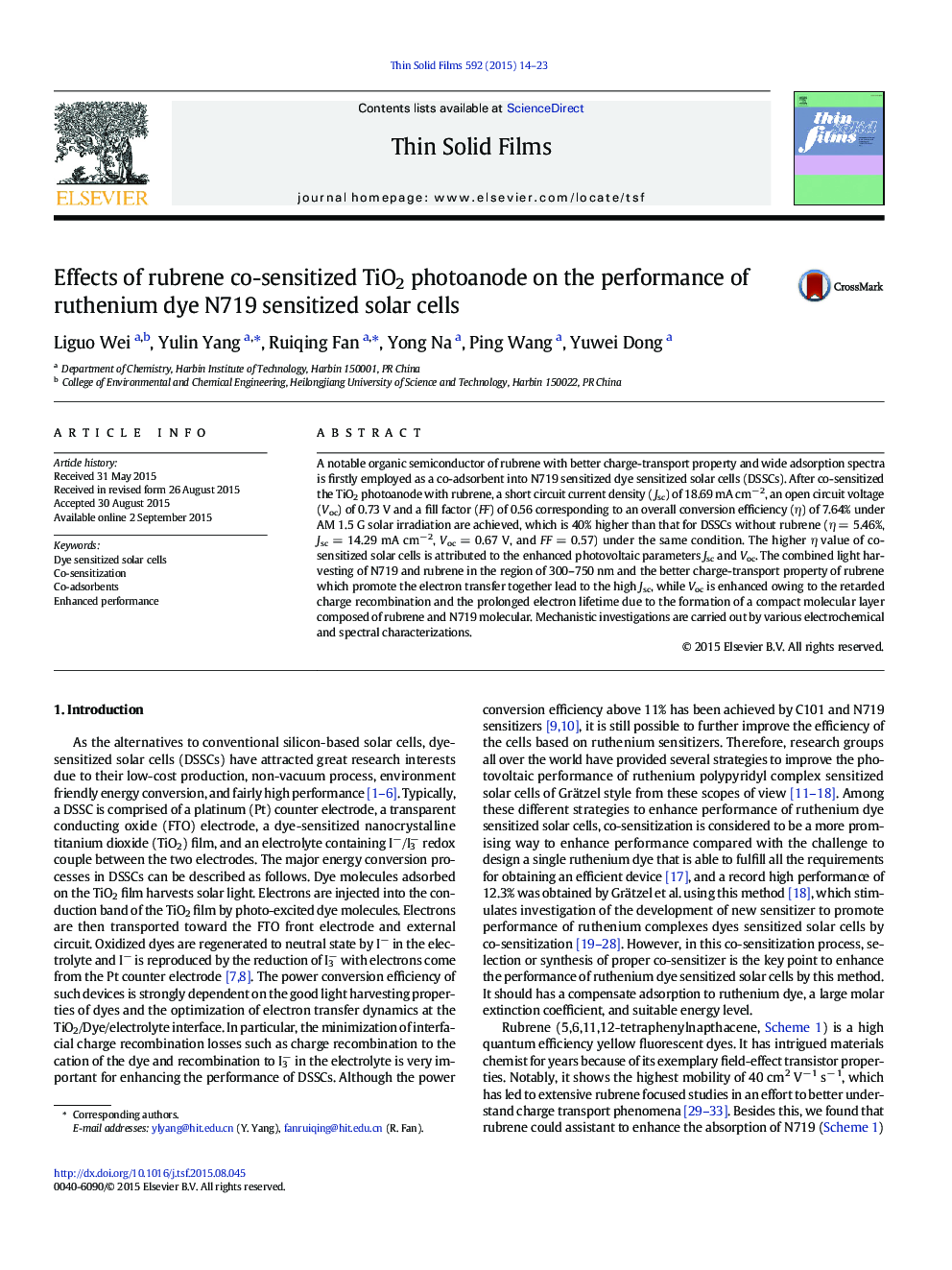| Article ID | Journal | Published Year | Pages | File Type |
|---|---|---|---|---|
| 1664397 | Thin Solid Films | 2015 | 10 Pages |
•Rubrene was firstly used to co-sensitize TiO2 photoanode in DSSCs.•Rubrene compensates N719 absorption, promotes electron transfer, and enhances Jsc.•Rubrene suppresses charge recombination, prolongs electron lifetime, and enhances Voc.•40% higher power-conversion efficiency was obtained by co-sensitization.
A notable organic semiconductor of rubrene with better charge-transport property and wide adsorption spectra is firstly employed as a co-adsorbent into N719 sensitized dye sensitized solar cells (DSSCs). After co-sensitized the TiO2 photoanode with rubrene, a short circuit current density (Jsc) of 18.69 mA cm− 2, an open circuit voltage (Voc) of 0.73 V and a fill factor (FF) of 0.56 corresponding to an overall conversion efficiency (η) of 7.64% under AM 1.5 G solar irradiation are achieved, which is 40% higher than that for DSSCs without rubrene (η = 5.46%, Jsc = 14.29 mA cm− 2, Voc = 0.67 V, and FF = 0.57) under the same condition. The higher η value of co-sensitized solar cells is attributed to the enhanced photovoltaic parameters Jsc and Voc. The combined light harvesting of N719 and rubrene in the region of 300–750 nm and the better charge-transport property of rubrene which promote the electron transfer together lead to the high Jsc, while Voc is enhanced owing to the retarded charge recombination and the prolonged electron lifetime due to the formation of a compact molecular layer composed of rubrene and N719 molecular. Mechanistic investigations are carried out by various electrochemical and spectral characterizations.
